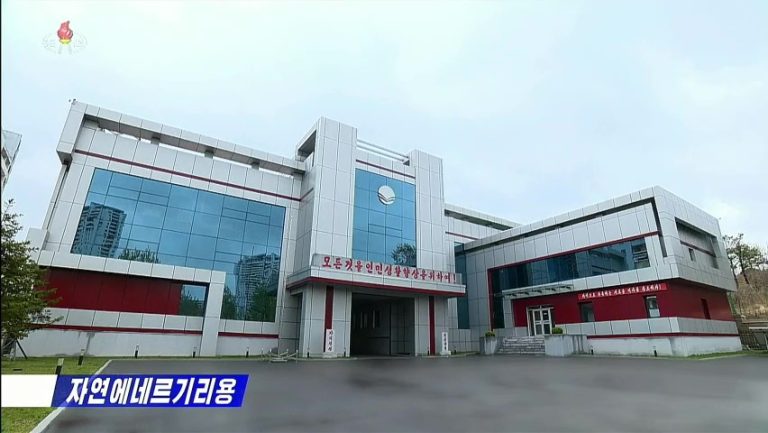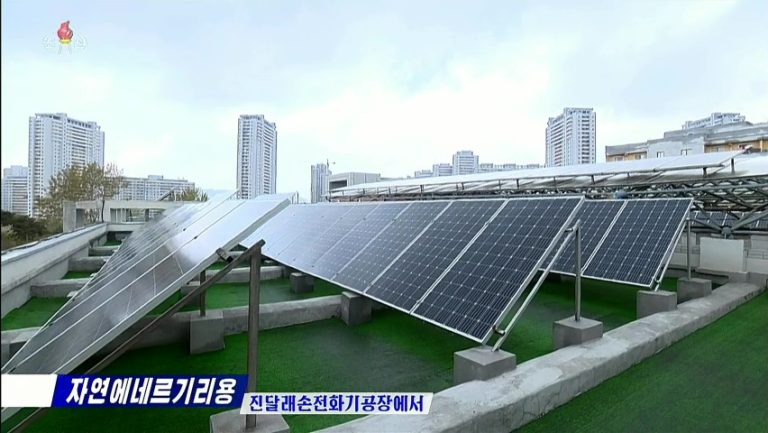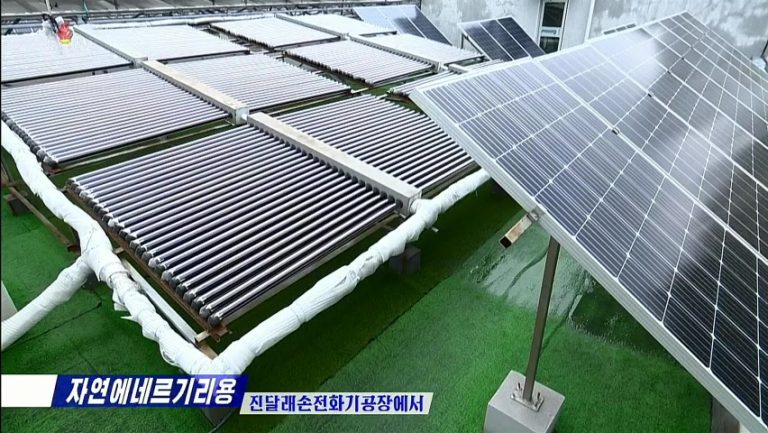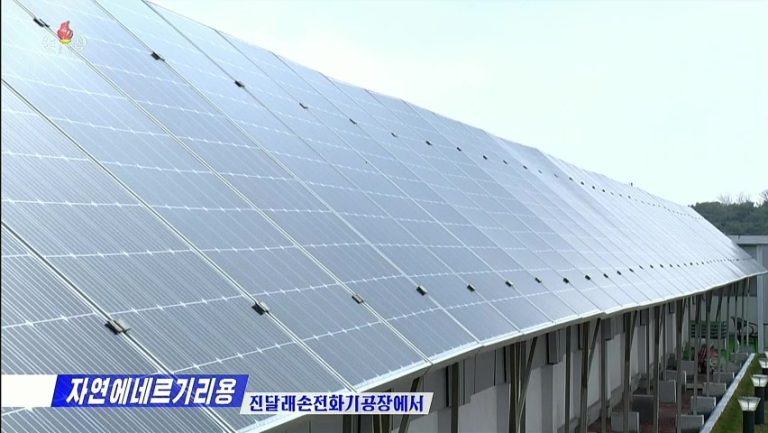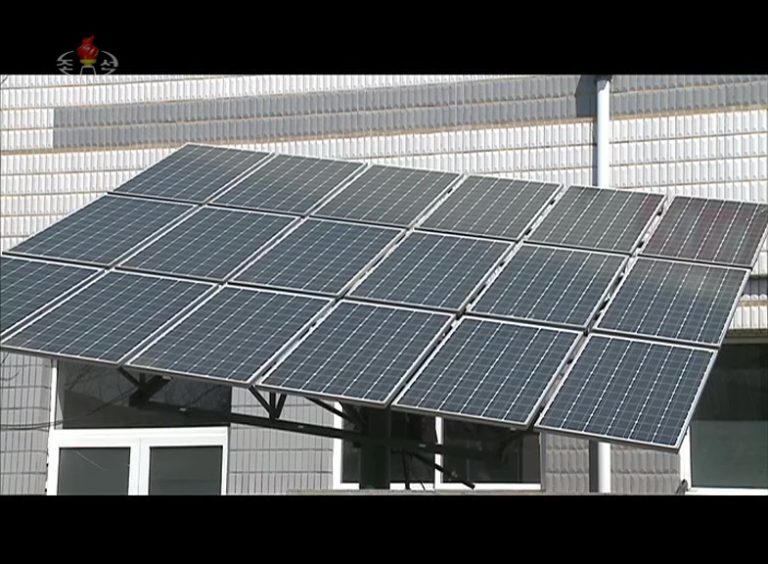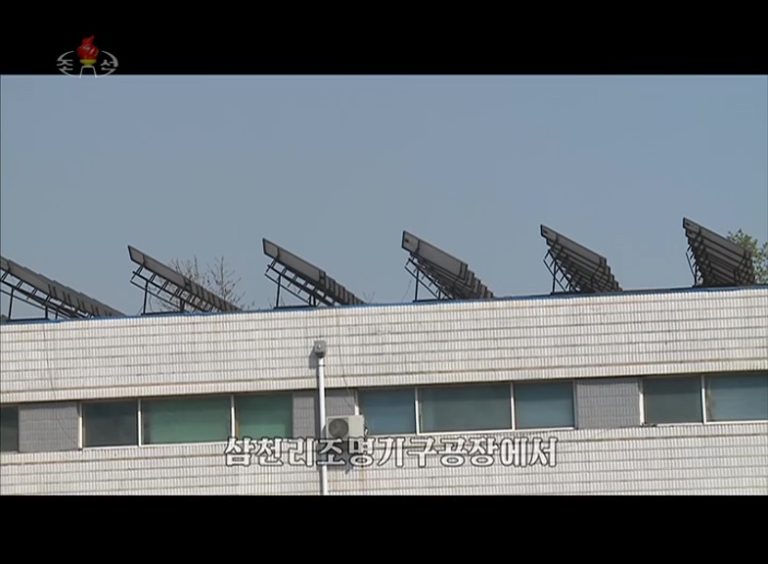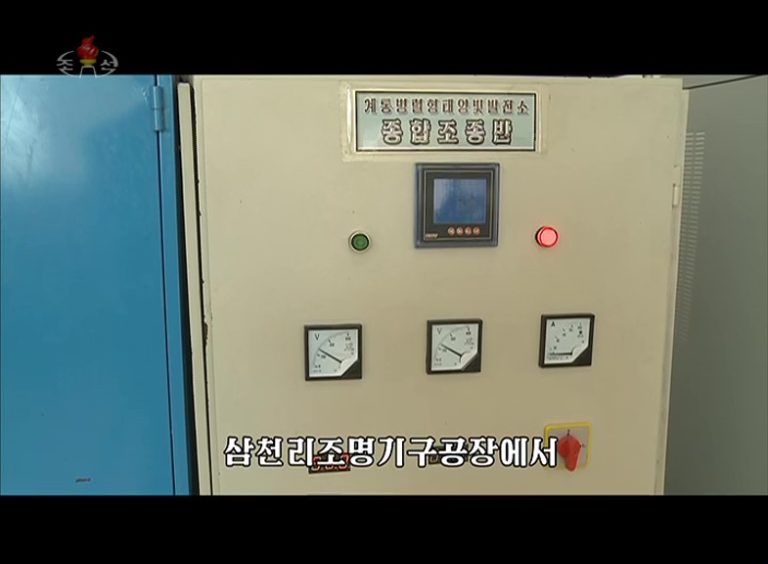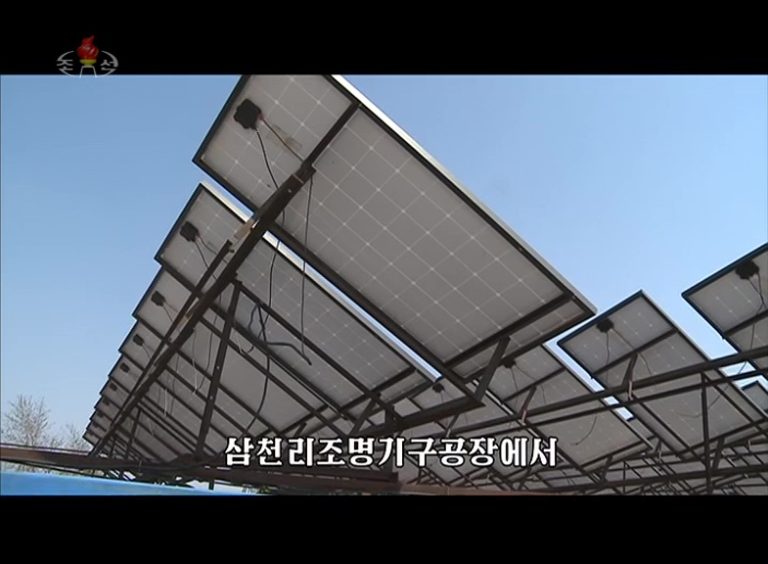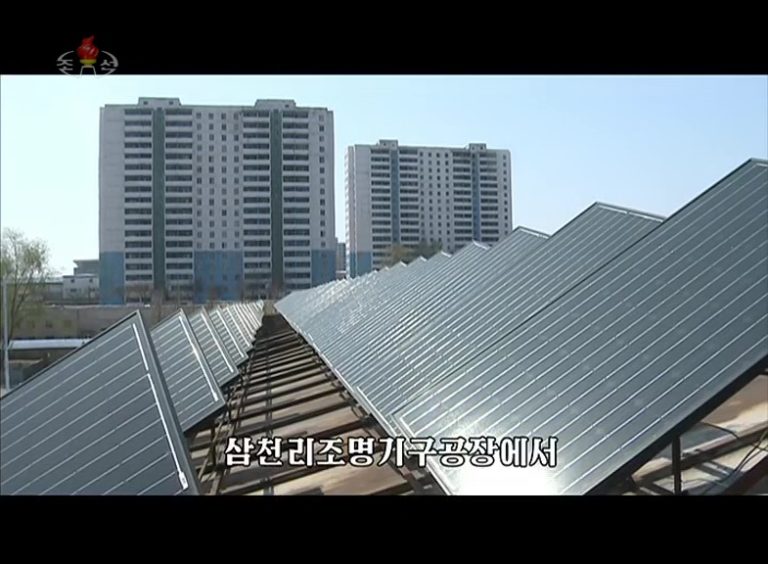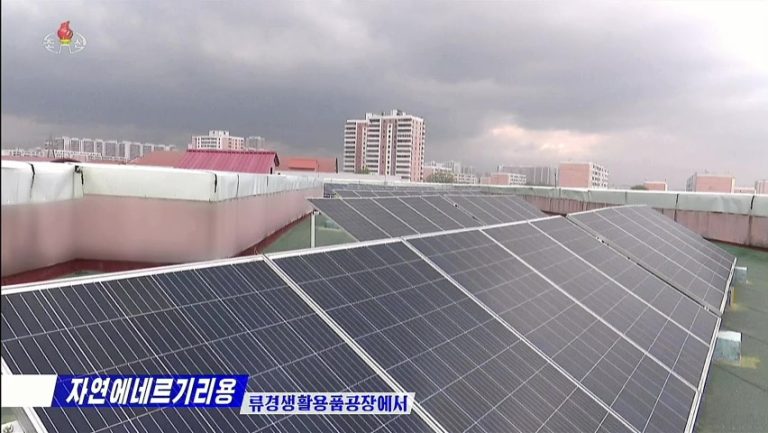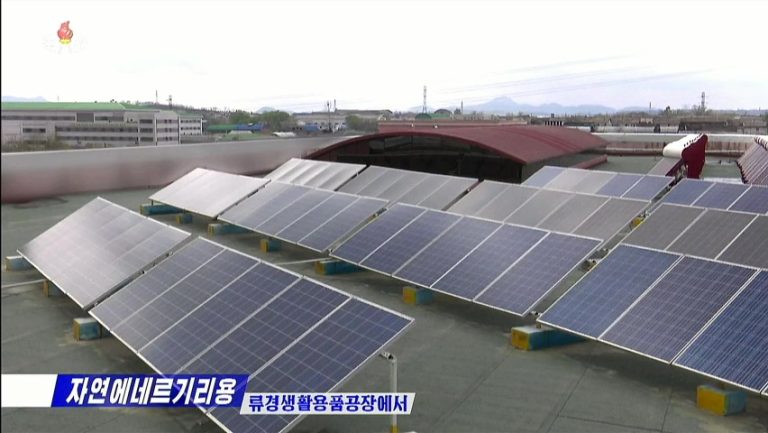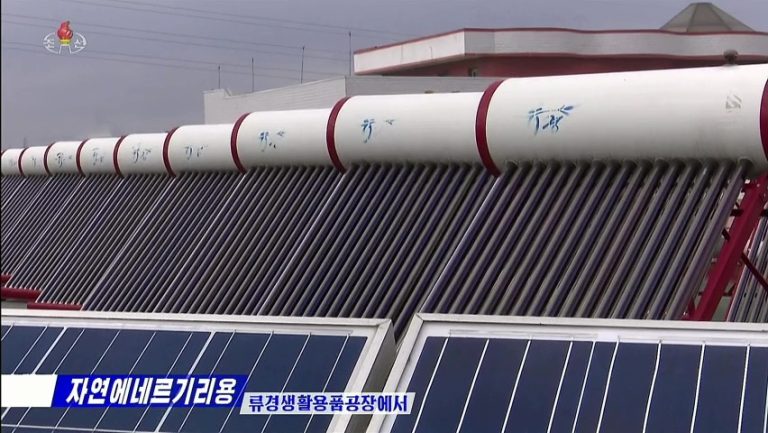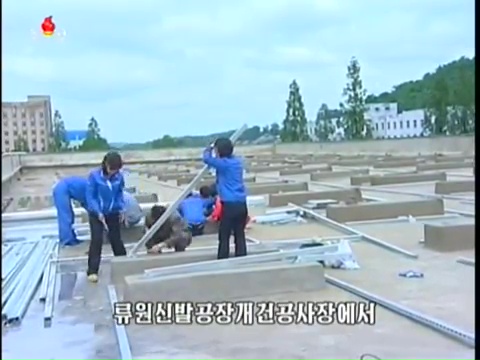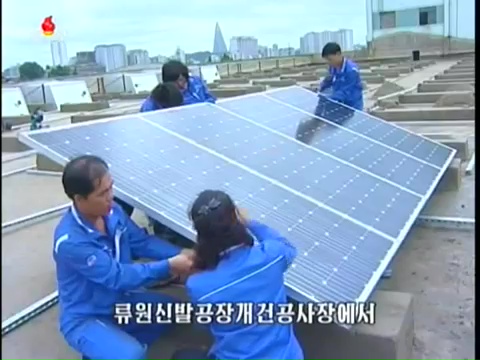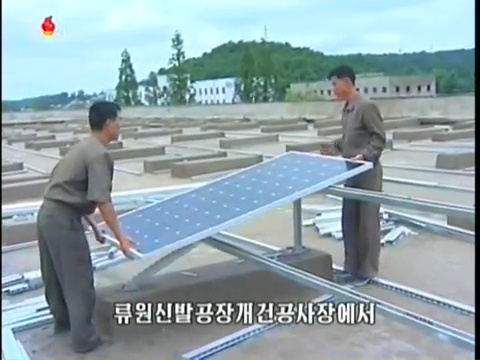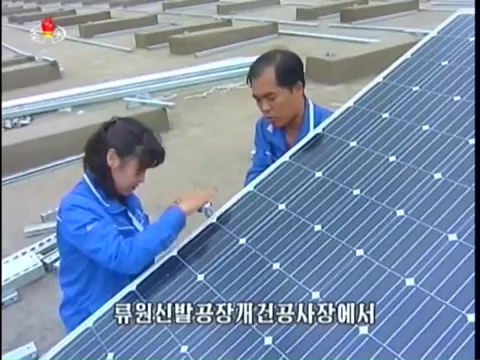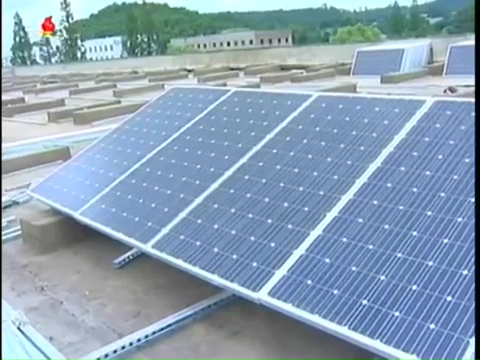North Korea’s Energy Sector: Solar in Manufacturing
In this installment of our series on North Korea’s energy sector, we look at major solar installations in the country’s manufacturing industry.
Solar power began appearing on North Korean industrial establishments around 2015 and has become more common ever since. However, despite its growing prominence, solar installations still only make up a fraction of office and factory rooftops in North Korea.
Today, solar can be found on some of North Korea’s most important or high-profile civilian factories, outlined below. The factories were chosen for the size of the installation and their notability, usually though consistent mentions in state media reporting. One factory, the Ryongbong School Supplies Factory (룡봉학용품공장, also translated as the Ryongbong School Things Factory), is featured due to the large solar installation, despite the solar panels curiously never having been the subject of a state media report.
North Korea operates a two-tier power grid where factories get preferential access to the country’s limited electricity resources. Given the need for continuous operation, most factory production likely operates on grid power. However, large solar power installations can be found on several of North Korea’s major manufacturing plants as well. These appear to be used as a supplemental source providing power for non-manufacturing operations such as the lighting of offices and hallways, operation of computers and cooling and heating. Indeed, in state television reports on solar installations at factories, these are the aspects of factory power consumption that are usually highlighted.
To put this in perspective, a single solar panel rated at 300 watts (an assumed rating based on mid-market solar panels) in Pyongyang is capable of producing around 1.1 kilowatt hour (kWh) of electricity per day on average, according to the Global Solar Atlas. A mid-range laptop might draw 520-watt-hours at full power in a workday, meaning a single panel could probably keep at least two running all day. As modern LED lights require much less power to operate, one panel could power 10-20 lights for a day.
Manufacturing Industry
Mangyongdae IT Corporation
Installation of a large solar array began on the roof of the Mangyongdae IT Corporation (만경대정보기술사) in the second quarter of 2018. The company develops a range of hardware and software for telecommunications products and sells smartphones under the Jindallae brand.
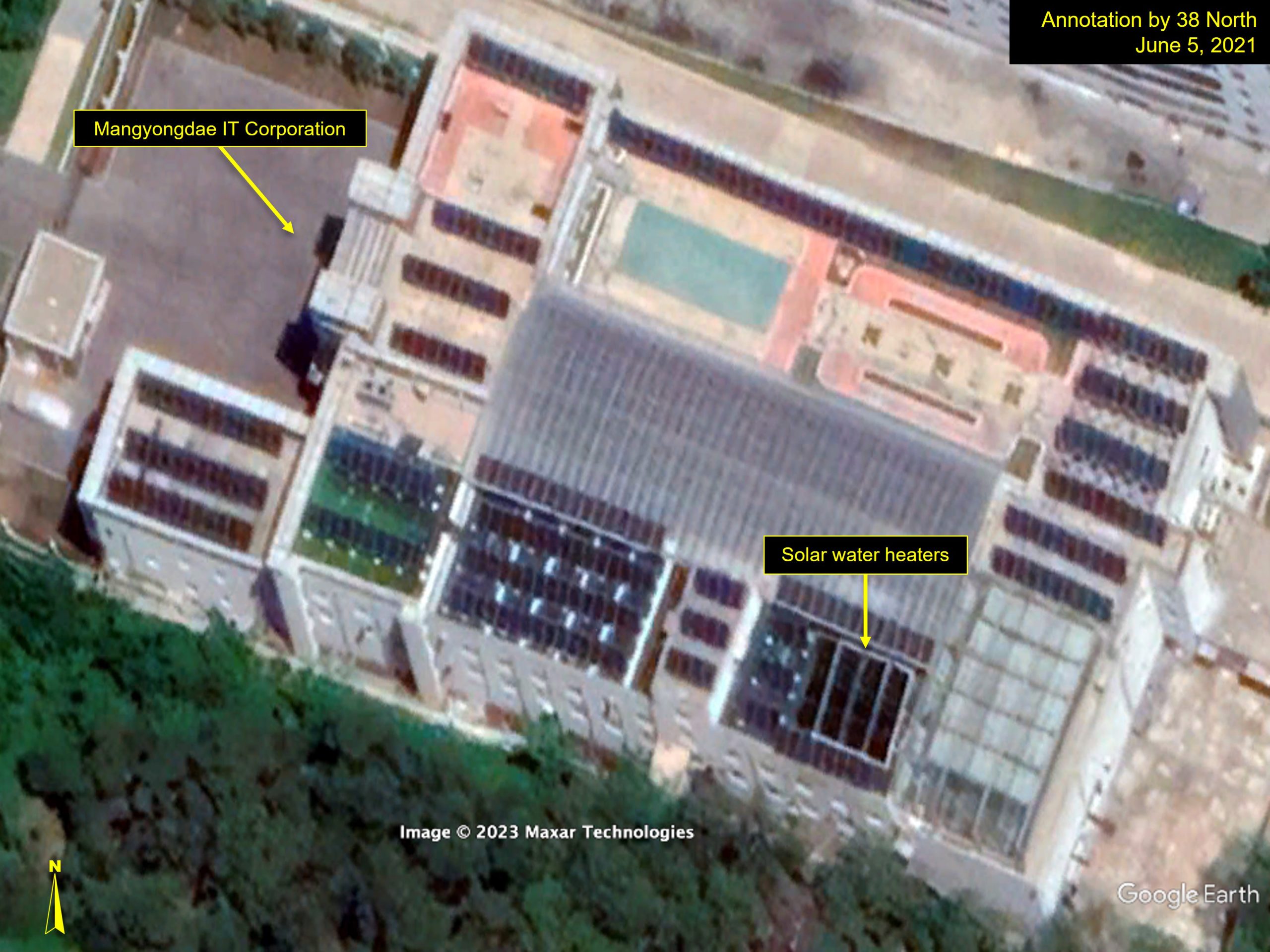
Coverage of the installation on state television showed a mix of solar water and solar electricity panels on the roof. Satellite imagery indicates around 270 solar panels and 12 solar water heaters on the roof.[1]
Samcholli Lighting Equipment Plant
The Samcholli Lighting Equipment Plant (삼천리조명기구공장, also translated as the Samcholli Lighting Appliances Factory) was an early adopter of solar power, having installed panels sometime between May 2015 and February 2016. The rooftop installation consists of around 330 panels; however, there are also two ground-mounted arrays of 36 panels that are moved by actuators. These ground-mounted units are unusual to see in North Korea, probably because of the additional cost and complexity of moving the solar array to track the sun. Most solar arrays are fixed on simple stands.
A report on state TV in February 2016 showed the arrays slowly moving to follow the sun’s position in the sky and credited their development to the factory. Such an arrangement makes the panels slightly more efficient and is seen in several other early solar configurations. A report in 2018 said the plant supplies surplus energy to the electricity grid.[2]
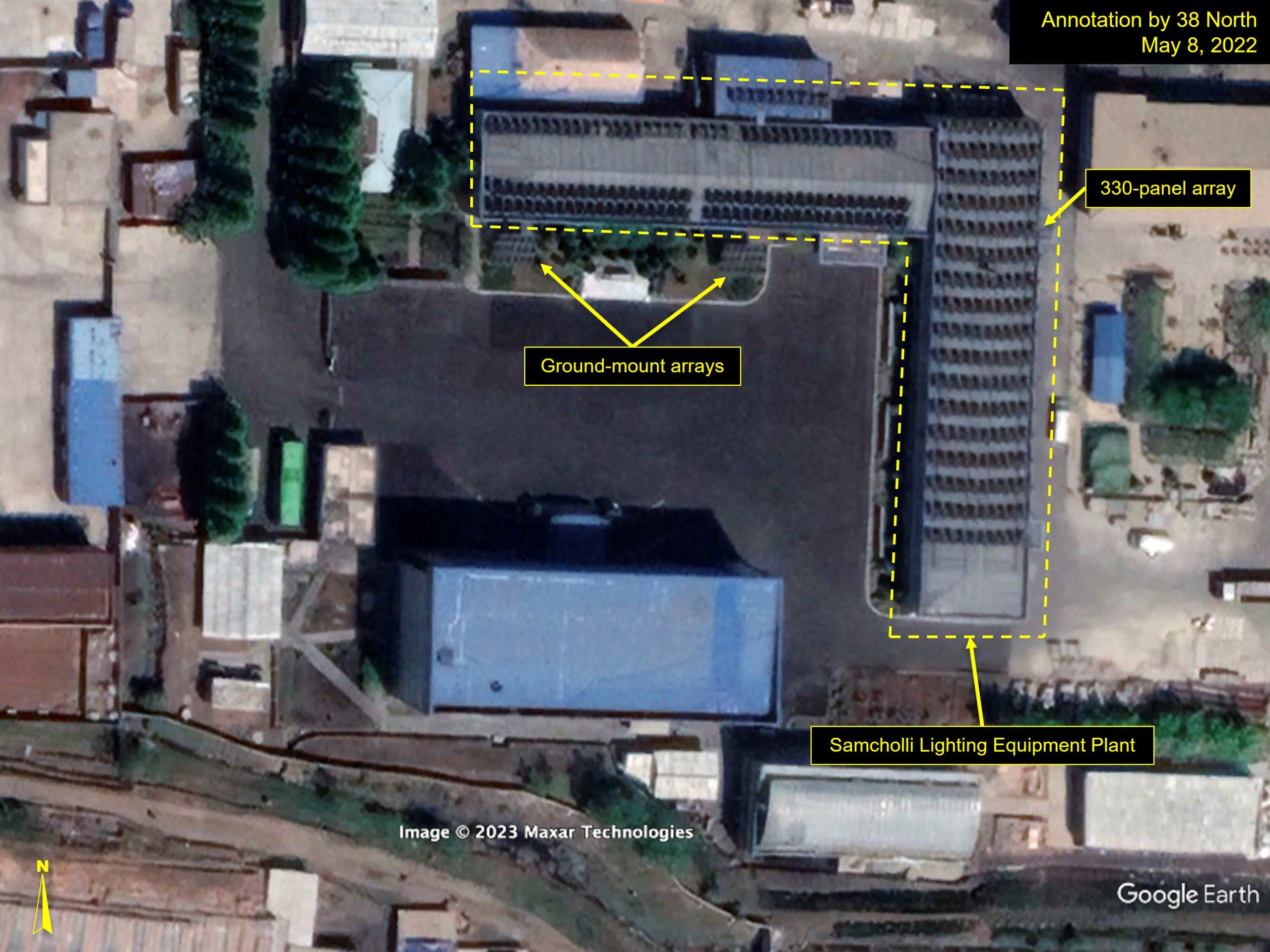
Ryugyong Household Goods Factory
The Ryugyong Household Goods Factory (류경생활용품공장) has a neatly arranged installation of 90 solar panels and 34 solar water heaters on the roof of one of its second buildings in Pyongyang’s Rakrang District. There are an additional three solar water heaters on the neighboring main building.
The panels were first added in 2018, shortly after the buildings were constructed, and initially consisted of two installations of 10 solar panels on each of the two buildings. By 2019, this had been changed to the current arrangement.
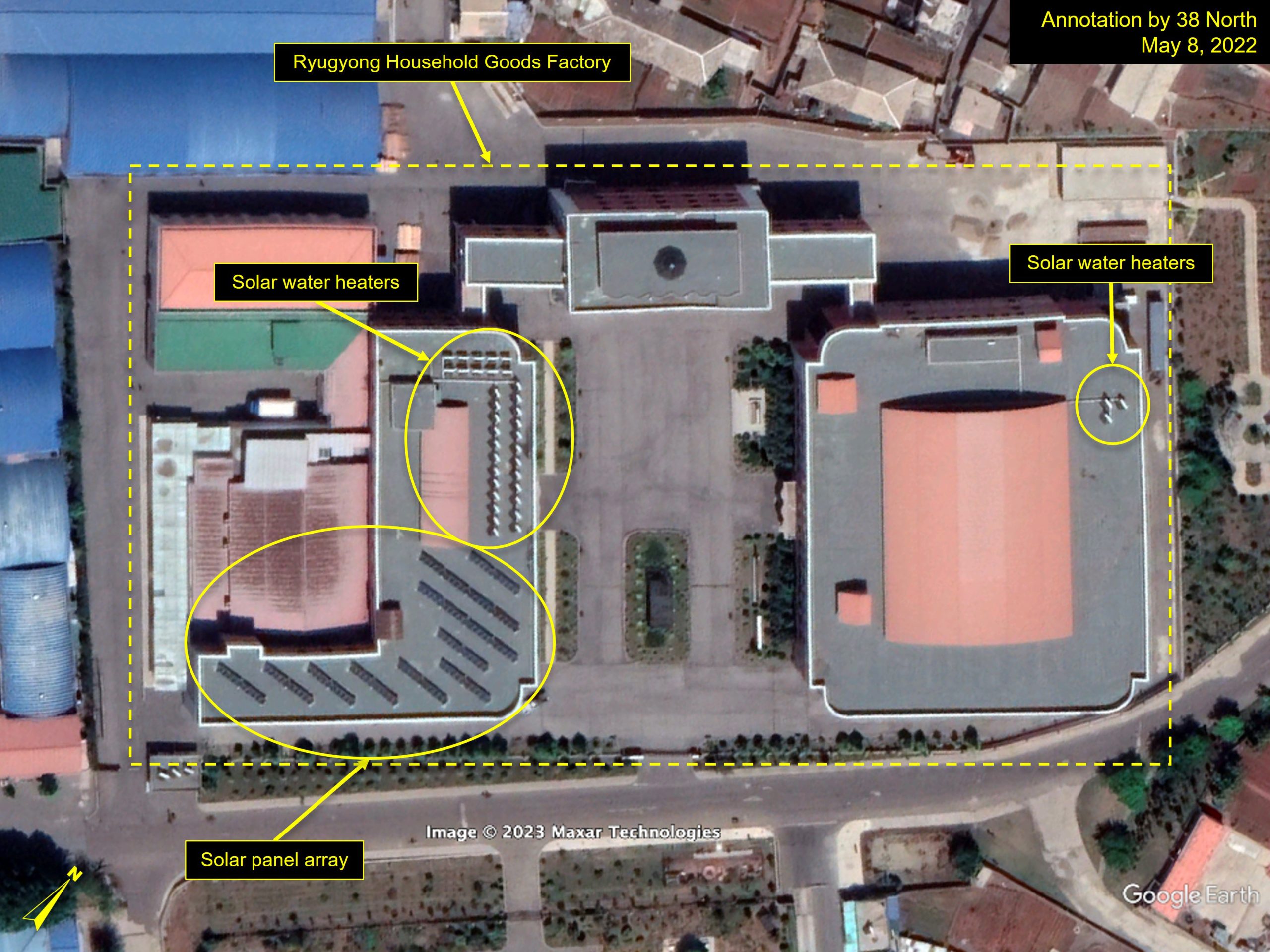
Ryongbong School Supplies Factory
The Ryongbong School Supplies Factory in Mangyongdae District on Pyongyang’s western edge has one of the largest solar installations in the country. Across the roofs of three buildings at the site are over 1,500 solar panels.
The panels were installed at the site in 2019 as part of a project to build a second auxiliary factory across the street from the main building. Such a large number of solar panels is unusual for any industrial building in North Korea.
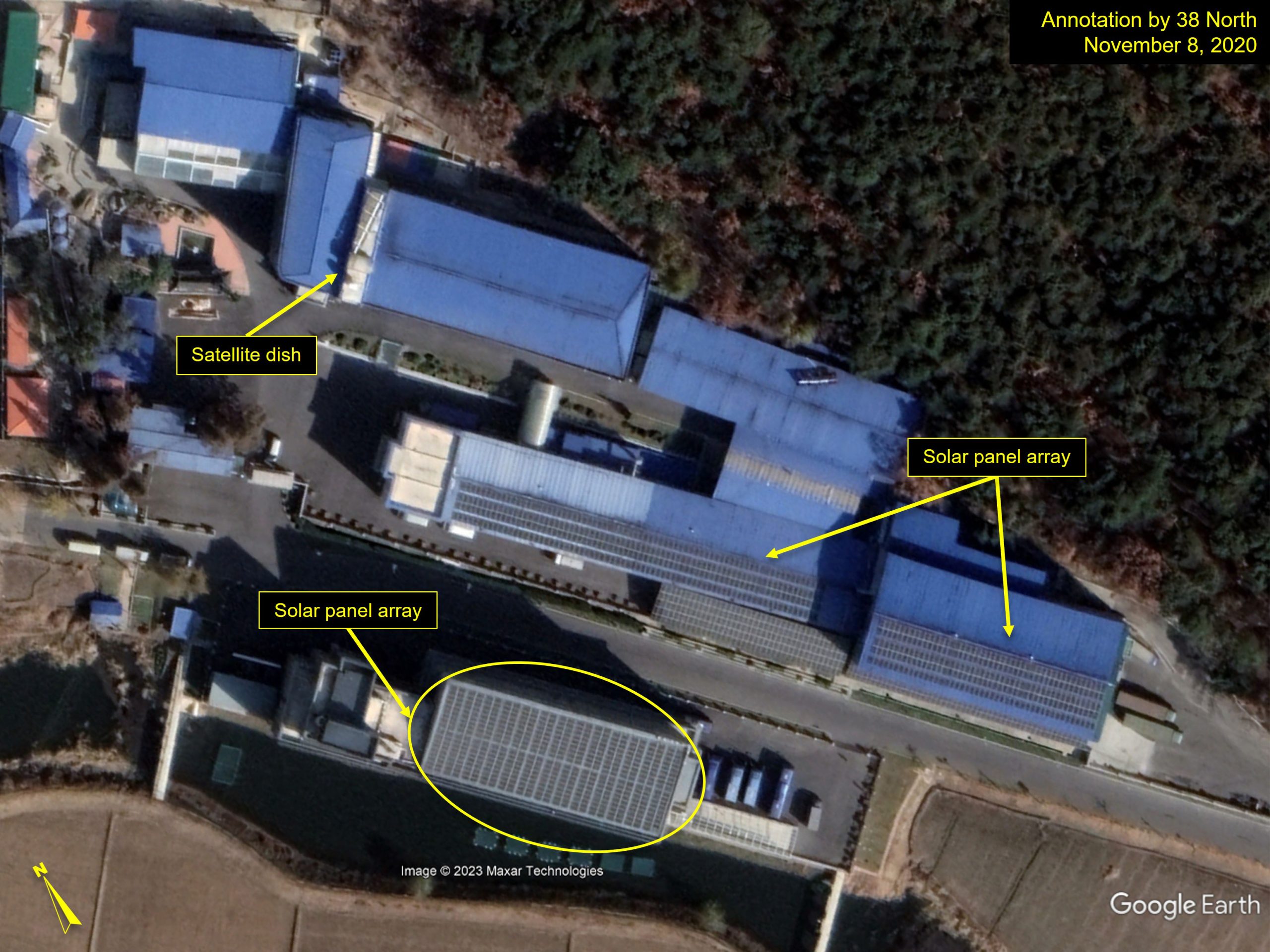
The factory manufactures school supplies such as notebooks, pencils, pens and bags and has been featured several times by state media as an exemplary factory. However, the substantial solar installation is rarely, if ever, mentioned in reporting on the site. Also, unusually for any factory in North Korea, a large satellite dish is installed on the roof of the main building.
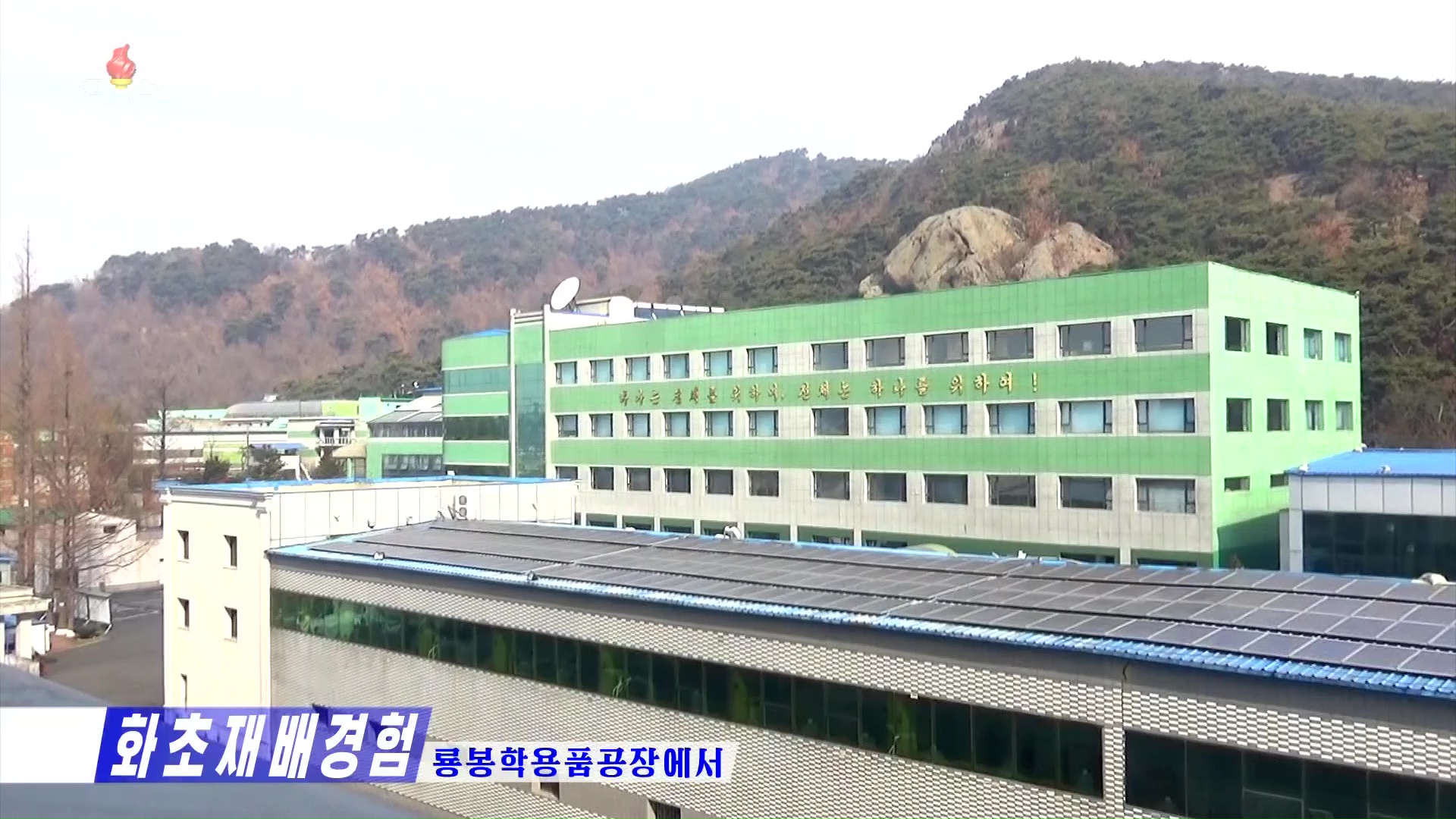
Taesongsan Ice Cream and Spring Water Factories
These two neighboring factories on the edge of Pyongyang both employ solar power. The Taesongsan Spring Water Factory (대성산샘물공장) was opened in May 2019, and the Taesongsan Ice Cream Factory (대성산아이스크림공장) in October 2022.[3]
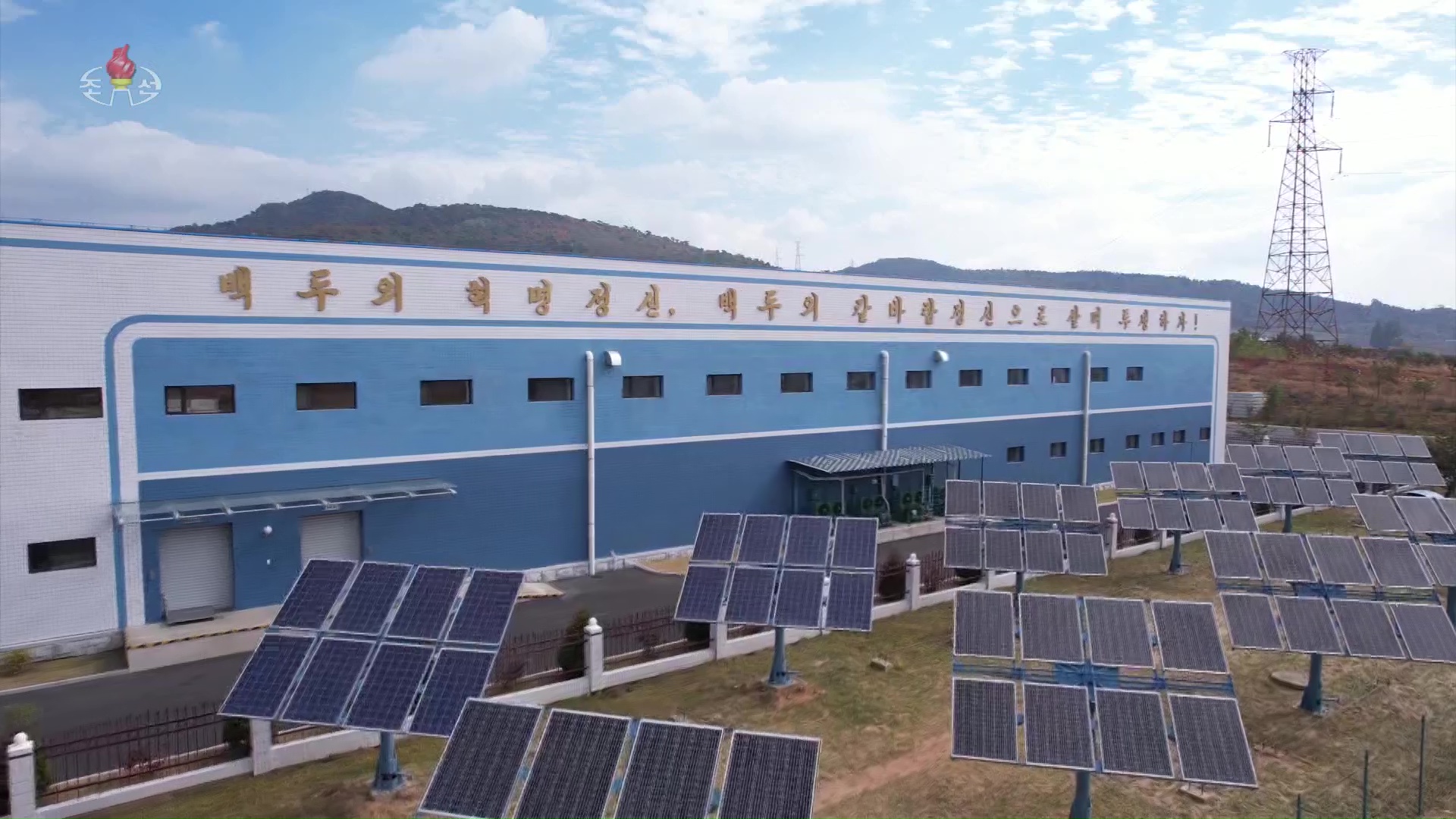
The former has an array of approximately 150 solar panels that were installed when the plant was built, and they were rearranged between March and May 2021. There are also six solar water heaters on the roof. The Ice Cream Factory has 14 sets of eight-panel arrays that also appear to be the type that follow the sun through the sky, similar to what the Samcholli Lighting Equipment Plant employs.
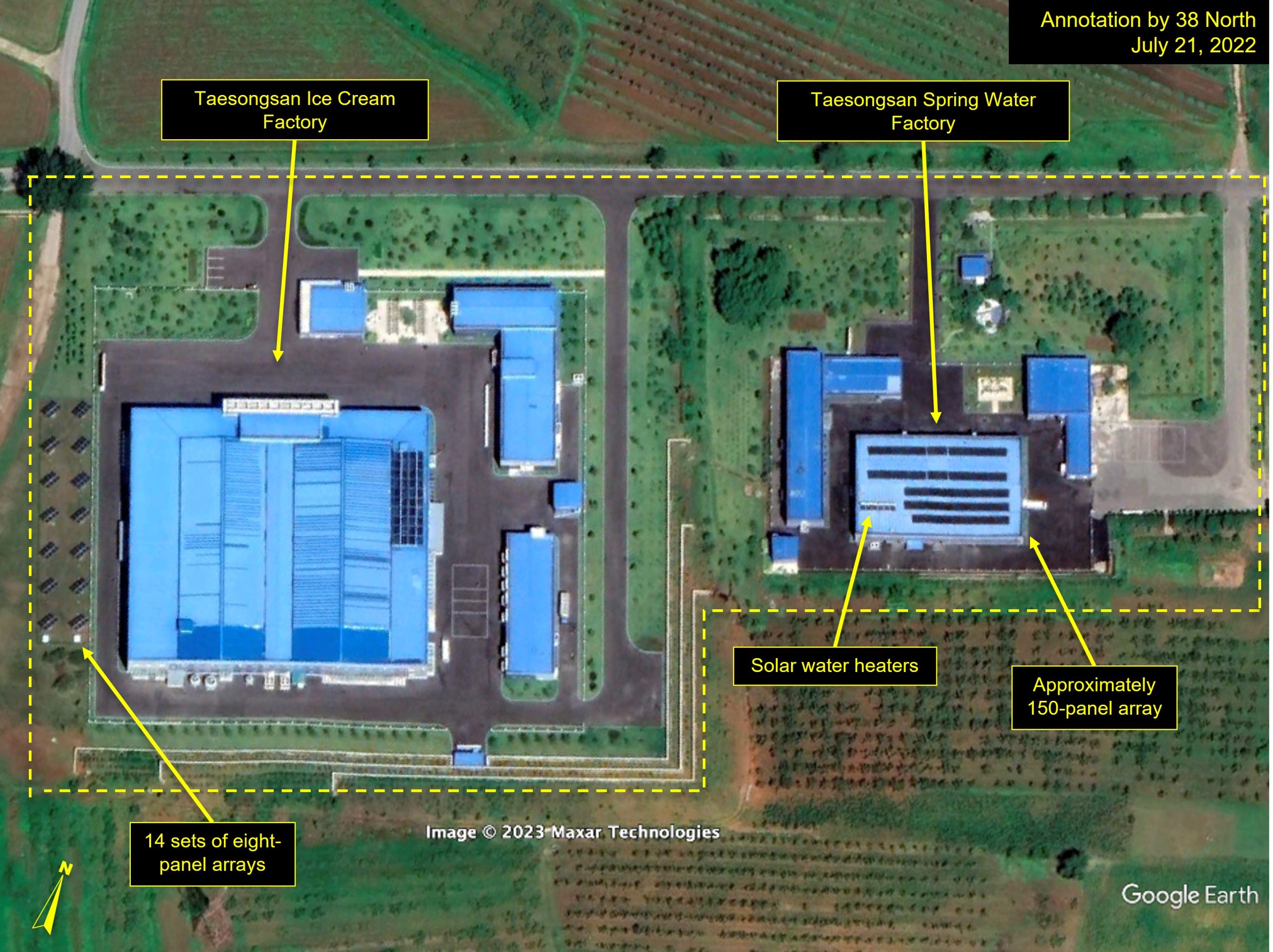
Ryuwon Shoe Factory
The Ryuwon Shoe Factory (류원신발공장) has one of the largest solar installations in Pyongyang. Across the roofs of every building on site are a total of 1,260 solar panels. The panels were installed in July 2016 in association with researchers from the Natural Energy Research Institute at the State Academy of Sciences.[4]
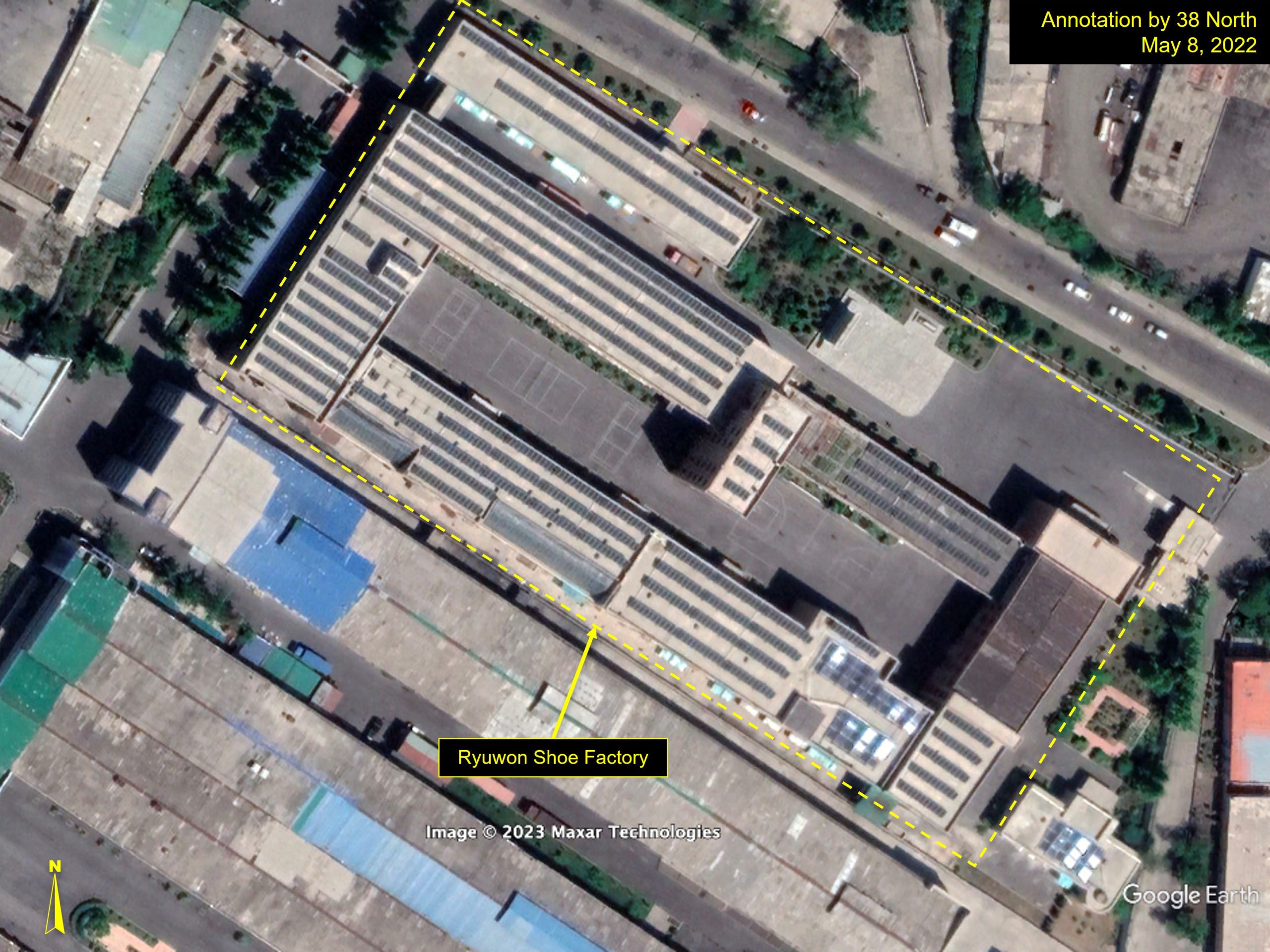
Sunchon Phosphatic Fertilizer Plant
The Sunchon Phosphatic Fertilizer Plant (순천린비료공장, also translated as the Sunchon Phosphatic Fertilizer Factory) is one of the biggest industrial plants opened by Kim Jong Un in the last few years, and it features an on-site array of approximately 400 panels. The array isn’t likely nearly enough to power the factory, which is directly connected to the Sunchon Thermal Power Plant, but the solar panels could easily supply much of the electricity required in the administrative buildings.
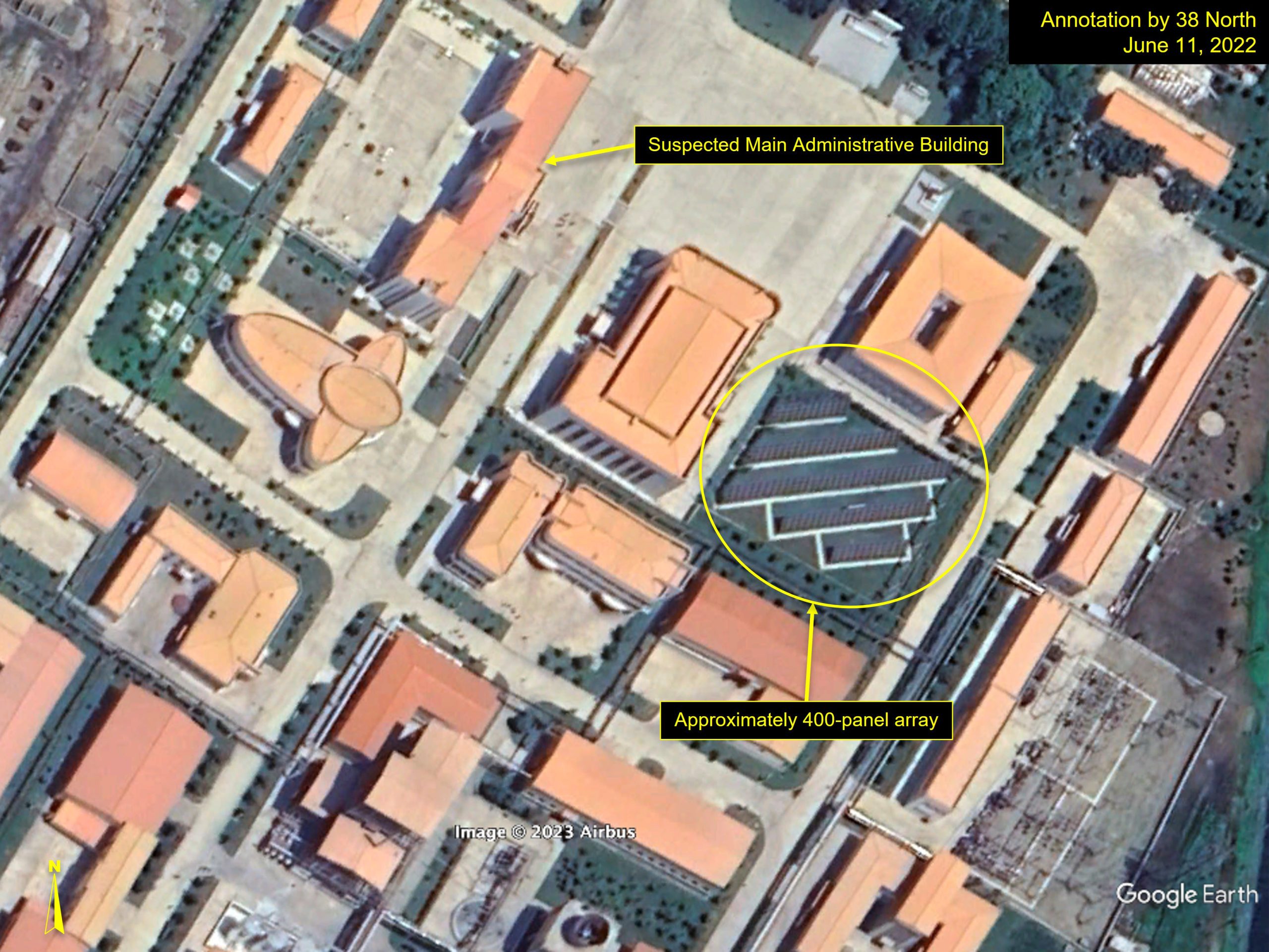
Next
In the next installment in the series, we’ll look at solar power in the agricultural sector.
- [1]
- [2]
- [3]
“Taesongsan Spring Water Factory Inaugurated,” Korean Central News Agency, May 18, 2019, https://kcnawatch.org/newstream/1558189870-303278481/taesongsan-spring-water-factory-inaugurated/; and “Taesongsan Ice Cream Factory Inaugurated,” Korean Central News Agency, October 27, 2022, https://kcnawatch.org/newstream/1666850822-340065934/taesongsan-ice-cream-factory-inaugurated/.
- [4]

